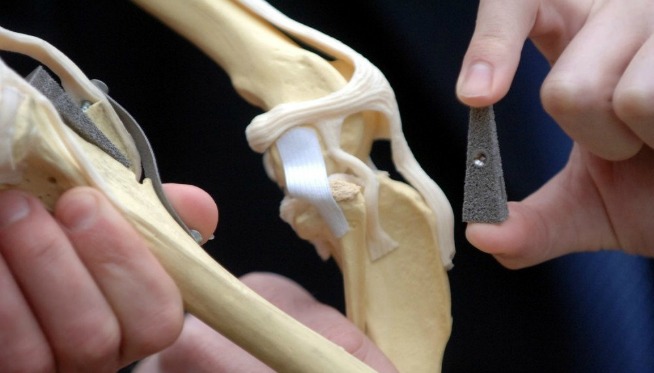A study carried out by the University of Northwestern has allowed to create a new “hyperelastic” tissue to print bone parts in 3D
In the future to repair our bones could be a 3D printer. It is not the beginning of a science fiction movie but the discovery made by researchers at Northwestern University.
According to the study published in Science Translational Medicine, the compound would act not only as a support for the bone structure but would also be able to promote the regeneration of the damaged fragment. The experiment conducted on mice has shown comforting results and could soon be used in the human field. I ratti da laboratorio infatti non hanno rigettato il tessuto iperplastico e come si conosce ormai da tempo la struttura genetica di questi animali è molto simile a quella umana.
Soprattutto i bambini
A beneficiarne di più di questa straordinaria scoperta sarebbe innanzitutto la fascia più giovane della popolazione. I bambini che subiscono un’operazione per l’installazione di una protesi metallicam crescendo sono costretti, alcune volte, a ripetere l’intervento a causa dei cambiamenti intervenuti alla loro struttura ossea.
Come afferma Ramille N Shah, capo del progetto di ricerca, “gli adulti avrebbero maggiori opzioni rispetto ai bambini. I giovanissimi invece devono sottoporsi a diversi interventi man mano che crescono e questo ovviamente li porterebbe ad affrontare anni difficili”
Il tessuto

A bone part created with a 3D printer
HB, or “hyperelastic” bone, is a compound made from a ceramic calcium mineral called hydroxyapatite and found mainly in teeth and bones and a polymer called polycaprolactone. The former is already used in the biomedical field to make bone prostheses while the latter, given its malleability, has been used for years in the 3D printing industry. This mix produces a tissue that can be modified by printers to make bone fragments. According to the study, the cells of our body are able to receive the material and respond positively favoring bone regeneration.
Not only America
American scientists are not the only ones. We Italians are there, too. The University of Milan Bicocca in May patented a material that can mimic human tissue. The compound made from a mix of silicon and polymers would again be capable of repairing damaged bone and cartilage and would be easily molded by 3D printers.